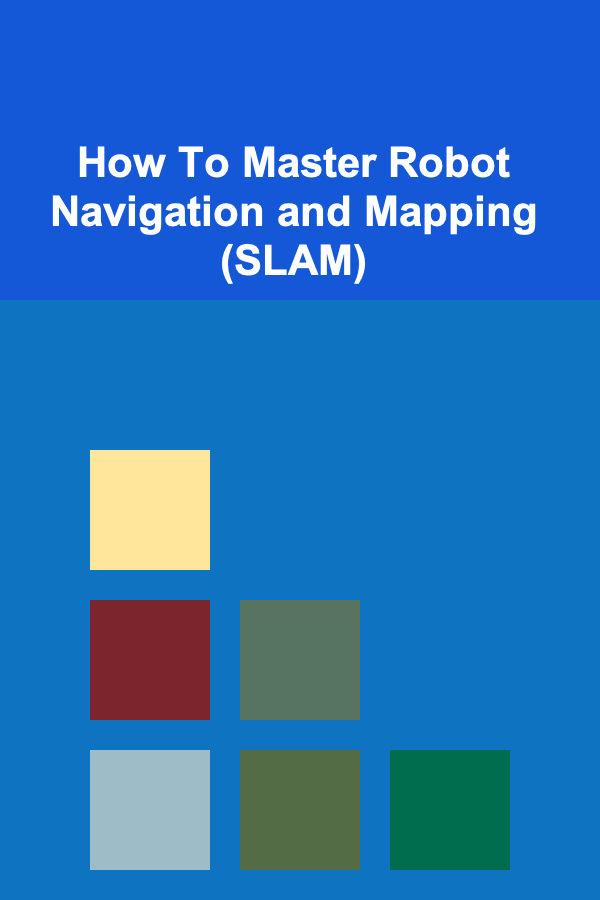
How to Choose the Right Machine Learning Framework for Your Project
ebook include PDF & Audio bundle (Micro Guide)
$12.99$8.99
Limited Time Offer! Order within the next:
Not available at this time

Machine learning (ML) has rapidly emerged as a powerful tool in modern technology, powering everything from recommendation systems to autonomous vehicles. However, the success of an ML project heavily depends on the choice of the framework used to build and train models. With a multitude of machine learning frameworks available, each offering unique advantages and trade-offs, selecting the right one can be a daunting task for data scientists and developers.
In this article, we will explore the key considerations and best practices for choosing the right machine learning framework for your project. We will dive deep into the factors you should evaluate, the most popular frameworks, and how to make an informed decision based on your project requirements.
Understanding Machine Learning Frameworks
Before we explore how to select the right framework, it's important to understand what a machine learning framework is and what it typically provides. A machine learning framework is a collection of libraries, tools, and pre-built components that facilitate the development of machine learning models. These frameworks abstract away much of the complexity involved in building and deploying models, allowing developers to focus on solving business problems rather than dealing with low-level programming.
Common features offered by ML frameworks include:
- Pre-built Algorithms: Many ML frameworks come with a collection of popular algorithms (e.g., linear regression, decision trees, neural networks) that can be easily used out-of-the-box.
- Data Preprocessing Utilities: Frameworks provide utilities for cleaning, transforming, and preparing datasets before feeding them into models.
- Model Training and Evaluation Tools: Frameworks typically offer efficient tools for training models, optimizing hyperparameters, and evaluating model performance.
- Deployment Capabilities: Many frameworks offer tools for deploying models to production environments or integrating them into existing systems.
The choice of framework determines the ease of model building, efficiency, scalability, and even the quality of the results you can achieve.
Key Factors to Consider When Choosing a Framework
The first step in selecting the right machine learning framework is understanding the specific needs of your project. Several factors will influence your decision, including:
2.1. Type of Machine Learning Task
The nature of the machine learning task you're working on will play a major role in determining which framework is best suited for the job. Machine learning tasks can generally be classified into several categories:
- Supervised Learning: Tasks like classification and regression, where the model is trained using labeled data.
- Unsupervised Learning: Tasks like clustering or dimensionality reduction, where the model is trained using unlabeled data.
- Reinforcement Learning: Tasks where an agent learns by interacting with an environment and receiving feedback in the form of rewards or penalties.
- Deep Learning: Tasks that involve complex neural networks, such as image classification, natural language processing (NLP), or speech recognition.
Some frameworks are specialized for certain types of ML tasks. For example, TensorFlow and PyTorch are excellent for deep learning tasks, while Scikit-learn is well-suited for traditional machine learning algorithms like regression or clustering.
2.2. Ease of Use
A framework's ease of use is crucial, especially for teams that may not have in-depth expertise in machine learning or deep learning. A user-friendly framework allows you to get up and running quickly without needing to learn complex syntax or spend time debugging low-level operations.
- High-level APIs: Frameworks like Keras (a high-level API built on top of TensorFlow) offer simple, intuitive interfaces for building deep learning models. These are ideal for rapid prototyping and experimentation.
- Low-level APIs: On the other hand, frameworks like TensorFlow and PyTorch offer more flexibility at the cost of complexity. These allow developers to have more control over model architecture, training, and deployment.
2.3. Performance and Scalability
The performance and scalability of a framework are particularly important for large-scale projects or when working with massive datasets. Some machine learning models require substantial computational power and memory, which can make it difficult to scale them efficiently.
- Distributed Computing: If you're working with large datasets, it may be necessary to scale your models across multiple CPUs or GPUs. Frameworks like TensorFlow and Apache Spark support distributed training.
- GPU Support: For deep learning tasks, using a GPU can significantly speed up model training. PyTorch and TensorFlow both offer GPU support, which is essential for working with complex neural networks and large datasets.
- Optimization: Some frameworks offer built-in optimization tools to make training more efficient. TensorFlow, for instance, has optimization libraries like TensorFlow Lite for edge devices and TensorFlow Serving for model deployment.
2.4. Community and Ecosystem
The size and activity of a framework's community can provide valuable insights into its robustness, usability, and the availability of resources. A strong community can offer the following benefits:
- Documentation: Well-documented frameworks are easier to understand and use. Clear guides, tutorials, and code examples can help you navigate the framework with ease.
- Community Support: An active community of developers can provide support via forums, GitHub, StackOverflow, and other platforms, helping you solve issues quickly.
- Third-party Tools: A larger ecosystem means there are more third-party libraries, tools, and integrations available, which can save time and effort in building your models.
Popular frameworks like TensorFlow, Keras, and PyTorch have large communities, making them easier to adopt and support.
2.5. Compatibility with Existing Infrastructure
It's essential to consider how well a given machine learning framework integrates with your existing infrastructure, including the development environment, cloud platforms, and production systems.
- Integration with Cloud Providers: If you are using cloud services like AWS, Google Cloud, or Microsoft Azure, check whether the framework has built-in integrations with these platforms. For instance, TensorFlow has strong support for Google Cloud, while AWS offers SageMaker for model deployment, which integrates well with popular frameworks.
- Deployment Flexibility: Consider how easy it is to deploy your trained models into production. For instance, TensorFlow Serving and PyTorch's TorchServe offer deployment solutions that make it easier to integrate machine learning models into live applications.
- Compatibility with Other Tools: Some frameworks are more compatible with other programming languages and tools. For instance, PyTorch integrates seamlessly with Python-based data science libraries like Pandas, NumPy, and SciPy.
2.6. Licensing and Cost
Licensing is an important consideration, particularly for commercial use. Some machine learning frameworks are open-source, while others come with licensing fees. Understanding the licensing model of a framework can help avoid any legal or financial complications down the road.
- Open Source: Frameworks like Scikit-learn, Keras, TensorFlow, and PyTorch are open-source, meaning they can be freely used, modified, and distributed. This is ideal for companies and developers with limited budgets.
- Commercial Frameworks: Some frameworks or tools may come with commercial licenses, especially when integrated into enterprise-level solutions. Make sure to review the licensing terms if your project will involve proprietary data or products.
Popular Machine Learning Frameworks and Their Use Cases
Now that we've established the key factors to consider when choosing a machine learning framework, let's explore some of the most popular frameworks available and their ideal use cases.
3.1. TensorFlow
TensorFlow, developed by Google, is one of the most widely-used deep learning frameworks. It provides a comprehensive ecosystem for building and deploying machine learning models, ranging from research prototypes to production-ready applications.
- Ideal for: Deep learning, neural networks, production deployment, and distributed systems.
- Strengths :
- High performance and scalability
- Extensive support for deep learning tasks
- Strong support for GPUs and distributed computing
- Rich ecosystem with TensorFlow Hub, TensorFlow Lite (for mobile), and TensorFlow.js (for JavaScript applications)
- Weaknesses :
- Steeper learning curve compared to high-level APIs like Keras
- Can be overly complex for simple tasks
3.2. PyTorch
PyTorch, developed by Facebook's AI Research lab, has gained immense popularity among the research community due to its dynamic computational graph, which makes it easier to experiment with novel models.
- Ideal for: Research and experimentation in deep learning, particularly for tasks in natural language processing (NLP) and computer vision.
- Strengths :
- Dynamic computation graph makes it more flexible and intuitive for research
- Seamless integration with Python-based libraries
- Strong community support and extensive documentation
- Weaknesses :
- Less mature than TensorFlow in terms of production deployment tools
- Lacks some of the extensive deployment features available in TensorFlow (e.g., TensorFlow Serving)
3.3. Scikit-learn
Scikit-learn is one of the most popular frameworks for traditional machine learning tasks such as classification, regression, and clustering. It is built on top of Python libraries like NumPy and SciPy.
- Ideal for: Classical machine learning algorithms, data preprocessing, and feature engineering.
- Strengths :
- Simple and user-friendly API
- Excellent support for traditional machine learning algorithms
- Extensive documentation and tutorials
- Weaknesses :
- Limited support for deep learning
- Does not scale well with large datasets
3.4. Keras
Keras is a high-level neural networks API written in Python, running on top of other frameworks like TensorFlow or Theano. It is known for its ease of use and user-friendly interface, making it a popular choice for rapid prototyping.
- Ideal for: Deep learning, especially for beginners or those looking to quickly build and test neural networks.
- Strengths :
- High-level, user-friendly API
- Supports multiple backends (TensorFlow, Theano, CNTK)
- Strong community and ecosystem
- Weaknesses :
- Less flexibility compared to lower-level frameworks like TensorFlow or PyTorch
Conclusion
Choosing the right machine learning framework is a critical decision that will impact the success of your project. By carefully considering factors such as the type of ML task, ease of use, performance, scalability, and compatibility with your existing infrastructure, you can select the framework that best meets your needs. Whether you are working on deep learning, traditional machine learning, or experimental research, the right framework can help streamline development, improve efficiency, and enable successful deployment.
Ultimately, the "right" machine learning framework depends on the specific requirements of your project, the resources available to you, and the expertise of your team. Understanding these factors and evaluating different frameworks will allow you to make an informed choice and set your project up for success.

How to Decide Which Rooms to Renovate First
Read More
How to Improve Home Security with Smart Technology
Read More
How to Manage Your Home Budget While Living with Roommates
Read More
How To Master Robot Navigation and Mapping (SLAM)
Read More
Choosing the Right Glue Gun: A Comprehensive Guide for Crafting and Repairs
Read More
How to Ace Your Data Science Interview: A Practical Guide
Read MoreOther Products

How to Decide Which Rooms to Renovate First
Read More
How to Improve Home Security with Smart Technology
Read More
How to Manage Your Home Budget While Living with Roommates
Read More
How To Master Robot Navigation and Mapping (SLAM)
Read More
Choosing the Right Glue Gun: A Comprehensive Guide for Crafting and Repairs
Read More